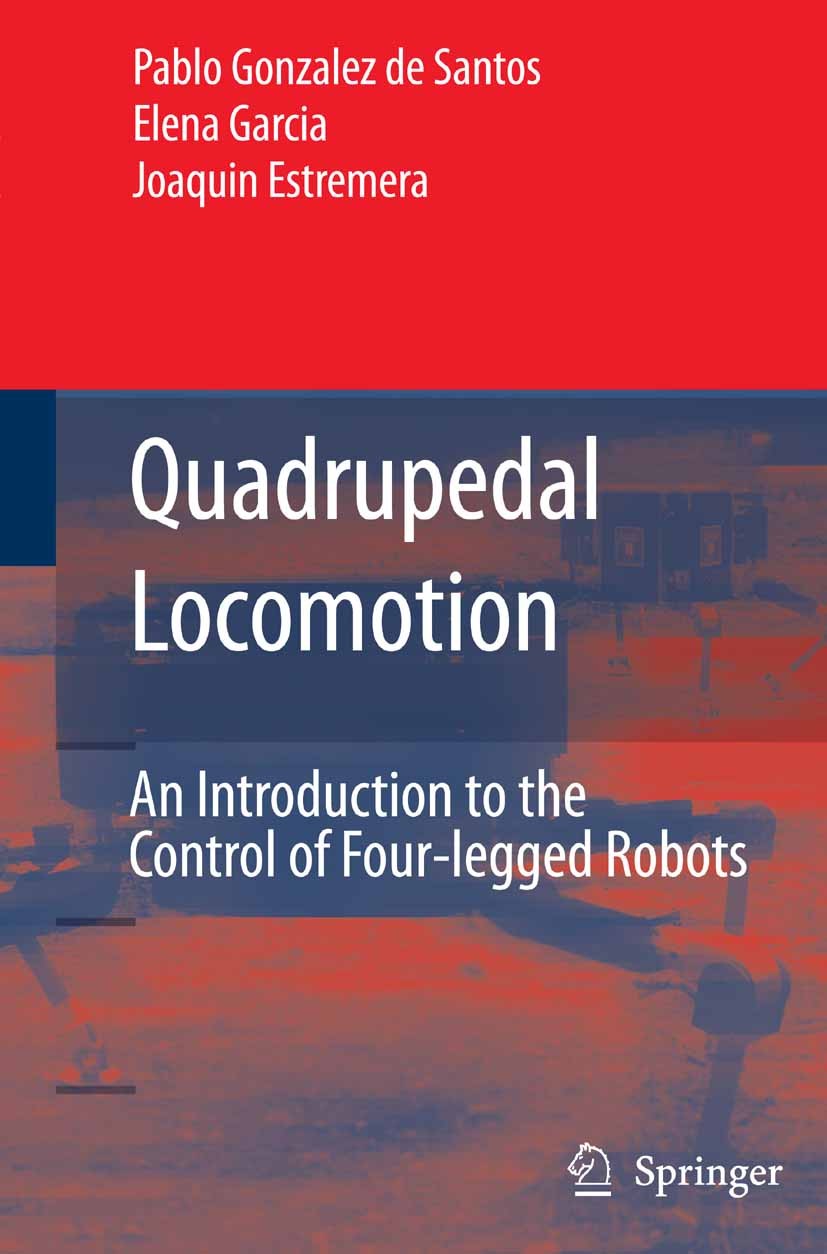| 书目名称 | Quadrupedal Locomotion | | 副标题 | An Introduction to t | | 编辑 | Pablo Gonzalez de Santos,Elena Garcia,Joaquin Estr | | 视频video | http://file.papertrans.cn/781/780073/780073.mp4 | | 概述 | First book to focus specifically on quadrupeds.Illustrates algorithms and methods by discussing simulation and experiments that have been tested on a real machine, the SILO4 walking robot.Data from th | | 图书封面 |  | | 描述 | Legged robots have proven to be a promising locomotion system, capable of performing tasks that conventional vehicles cannot perform. Even more exc- ing is the fact that this is a rapidly developing ?eld of study for researchers from a variety of disciplines. Over the past three decades, legged locomotion technology has been developed all over the world, resulting in the invention of many important new machines and methods. However, only a few books have been published on the subject of multi-legged robots. The main objective of this book was to explore some of the major issues that the authors have been analyzing over the past ten years. A second objective was to write a book that only encompasses quadruped locomotion, the ?rst specialized book on this topic. The book is divided into two parts: Walking Measurements and Algorithms, and Control Techniques. The ?rst part is devoted exclusively to the theoretical aspects of quadrupeds. The ?rst chapter is an introduction to the historic development of multi-legged robots, highlighting their advantages and disadvantages, main features, and potential and actual applications, as well as discussing basic concepts and the trade-o? between | | 出版日期 | Book 2006 | | 关键词 | Hexapod; algorithms; kinematics; proving; robot; robotics; sensor | | 版次 | 1 | | doi | https://doi.org/10.1007/1-84628-307-8 | | isbn_softcover | 978-1-84996-576-7 | | isbn_ebook | 978-1-84628-307-9 | | copyright | Springer-Verlag London 2006 |
The information of publication is updating

|
|
 |Archiver|手机版|小黑屋|
派博传思国际
( 京公网安备110108008328)
GMT+8, 2025-11-12 01:17
|Archiver|手机版|小黑屋|
派博传思国际
( 京公网安备110108008328)
GMT+8, 2025-11-12 01:17


